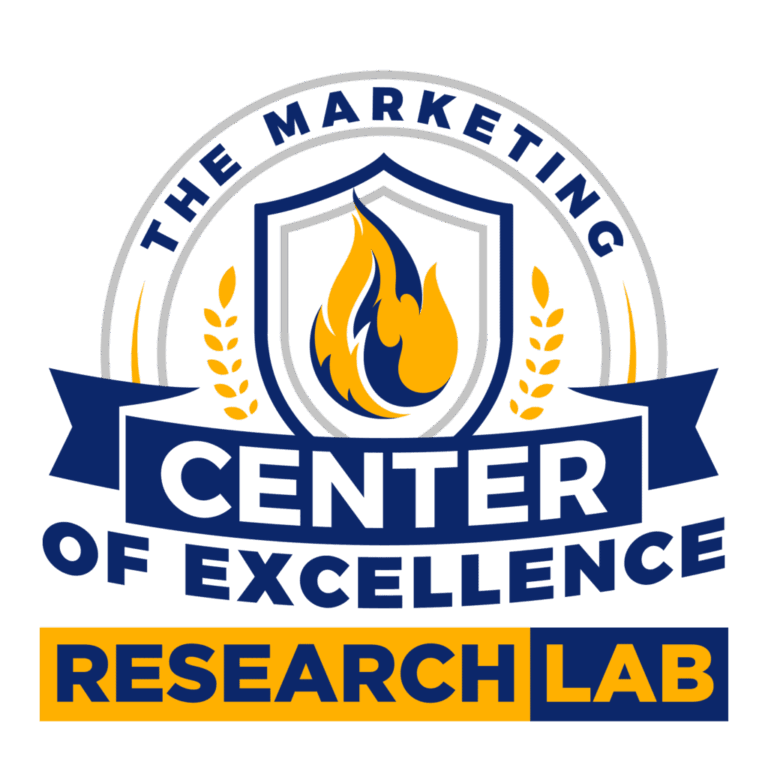By Lane Houk, Founder, Quantum Agency & SEO Success Academy
The Invisible Revolution: Why Your Best Marketing Channel is Hiding in Plain Sight
Traditional SEO is quietly becoming secondary to a new form of digital visibility that most businesses can’t even see. While you’re tracking clicks and rankings, your competitors might be building authority in AI-powered search systems that are fundamentally changing how customers discover brands.
“I’ve been working with clients on SEO strategies for years, but the shift toward AI-powered search has completely changed how we think about visibility,” says Lane Houk, founder of Quantum Agency. “The businesses that recognize this shift early will have a massive competitive advantage.”
Recent research from Semrush reveals that LLM traffic will completely overtake traditional Google search by 2027. This isn’t just a prediction—it’s already happening. The shift represents the most significant change in digital marketing since the rise of search engines themselves.
Understanding the LLM Visibility Gap
What Traditional Analytics Miss
Your Google Analytics dashboard tells you about clicks, but it’s blind to the most powerful brand discovery mechanism of the modern internet. When someone asks ChatGPT, Claude, or Perplexity about your industry and sees your brand mentioned, they often visit you directly later. This appears in your analytics as direct traffic, branded searches, or untagged referrals—with zero attribution to the AI mention that started their journey.
Almost 90% of ChatGPT’s citations come from search results ranking in positions 21+ — not the top 5 rankings you’re fighting for. While traditional SEO focuses on ranking #1, AI systems mine pages 3, 5, and 10 for authoritative answers.
The New Customer Journey
The fundamental path to purchase has evolved:
Old Way:
Google Search → Click → Explore → Decide
New Way:
Ask AI → See Mention → Research Brand → Visit Directly Later
This creates what we call “invisible influence”—your brand impacts purchasing decisions without generating trackable referral traffic.
The Four Pillars of LLM Visibility
“After analyzing hundreds of client campaigns, I’ve identified four core areas where businesses need to focus their efforts,” explains Houk. “Most companies are still thinking about SEO in terms of keywords and rankings, but LLM visibility requires a completely different approach.”
1. Semantic Authority Over Keyword Rankings
Traditional SEO focuses on ranking for specific keywords. LLM visibility requires building semantic authority around topic clusters. AI systems don’t just look at what you rank for—they evaluate the depth and breadth of your expertise across related concepts.
Strategy: Create comprehensive content hubs that cover not just your main topic, but all the adjacent concepts, edge cases, and nuanced questions that only true experts would address.
2. Citation-Worthy Expertise
At Quantum Agency, we’ve found that LLMs prioritize content that demonstrates genuine expertise through:
• Process transparency: Showing exactly how you achieve results
• Nuanced perspectives: Acknowledging when approaches don’t work and explaining why
• Practical insights: Sharing details that only practitioners would know
• Clear methodology: Explaining your reasoning and decision-making process
3. Cross-Platform Content Syndication
Unlike traditional SEO that focuses on your website, LLM visibility requires strategic content distribution across multiple platforms where AI systems can discover your expertise:
• Industry forums and communities: Reddit, Discord, specialized forums
• Professional networks: LinkedIn articles, industry publications
• Video platforms: YouTube, podcast appearances
• Documentation sites: GitHub, technical wikis
• Social media: Twitter threads, LinkedIn posts with substantial insight
4. Contextual Relevance
LLMs excel at understanding context and matching content to specific user needs. This means your content needs to be:
• Situation-specific: Address particular use cases and scenarios
• Audience-aware: Tailored to different levels of expertise
• Problem-focused: Directly answering common questions in your field
• Actionable: Providing concrete next steps users can take
Advanced Strategies for LLM Optimization
The Co-Citation Strategy
Research shows that citation-worthy content follows similar principles to link-worthy content, appearing alongside other authorities in expert clusters. When industry publications discuss best practices, they cite multiple experts. Your goal is to become part of that authoritative conversation.
Implementation:
• Guest post on publications that already cite your competitors
• Participate in expert roundups with genuine value-add insights
• Create comparison content that positions you alongside established authorities
• Contribute to industry studies and research initiatives
The Long-Tail Citation Opportunity
“This is where smaller businesses can really compete,” notes Houk. “While Fortune 500 companies are still fighting over broad terms like ‘digital marketing,’ there’s incredible opportunity in specific niches where you can become the definitive authority.”
While competitors fight for broad terms, LLMs offer unprecedented opportunities in long-tail, specific queries. A detailed post about “B2B SaaS customer onboarding analytics for remote teams” can carry the same citation weight as a Fortune 500 company’s generic business software page.
Tactical Approach:
• Identify micro-niches within your expertise
• Create authoritative content for highly specific scenarios
• Address edge cases that larger competitors ignore
• Build depth in overlooked but valuable topic areas
Schema Markup for AI Understanding
While traditional schema markup helps search engines understand your content, enhanced structured data becomes even more critical for AI systems:
Essential Schema Types for LLM Visibility:
• Article schema: Helps AI understand content hierarchy and expertise
• FAQ schema: Directly feeds Q&A training data
• How-to schema: Provides step-by-step processes AI can reference
• Organization schema: Establishes your brand’s authority and expertise areas
• Review schema: Builds trust signals that AI systems value
The Community Amplification Effect
Your engaged audience multiplies LLM visibility in ways traditional SEO can’t measure. When customers share your insights in:
• Slack channels: Internal company discussions
• Discord servers: Community conversations
• LinkedIn comments: Professional network discussions
• Reddit threads: Detailed expertise-based responses
These create citation pathways that LLMs discover and value, often carrying more weight than traditional press releases or generic content.
Measuring LLM Visibility: Beyond Traditional Metrics
“The biggest challenge I see with clients is that they’re trying to measure LLM success with SEO metrics,” explains Houk. “It’s like trying to measure television advertising success with newspaper circulation numbers. You need completely different KPIs.”
Key Performance Indicators for AI Visibility
Traditional metrics like organic traffic and keyword rankings don’t capture LLM influence. Focus on these indicators instead:
Direct Signals:
• Branded search volume increases
• Direct traffic stability despite declining organic clicks
• Sales calls mentioning AI discovery
• Customer feedback referencing AI recommendations
Indirect Signals:
• Increased social media mentions
• Growth in newsletter subscriptions
• Rise in branded queries for specific topics you cover
• Competitor analysis showing your mention frequency
Tools for Tracking LLM Performance
While the space is evolving rapidly, several tools are emerging to help measure AI visibility:
Current Options:
• Semrush AI Toolkit: Comprehensive LLM visibility tracking
• BrightEdge Research Cloud: AI search optimization insights
• Conductor: Content optimization for AI systems
• Custom monitoring: Using AI systems to track your own mention frequency
DIY Tracking Methods:
• Regularly query AI systems with industry-related prompts
• Monitor branded search patterns in Google Search Console
• Track direct traffic correlation with content publishing
• Survey customers about discovery methods
The Attribution Challenge
The biggest measurement challenge is attribution. When LLM visibility drives business results, it often appears as:
• Direct traffic: Users typing your URL after AI discovery
• Branded searches: Googling your company name
• Untagged referrals: Bookmarked visits from AI-influenced research
Solution Framework:
1. Establish baseline metrics before LLM optimization
2. Correlate content publishing with branded search spikes
3. Survey customers about their discovery journey
4. Use UTM parameters for AI-influenced content campaigns
5. Track patterns between LLM visibility increases and business outcomes
Industry-Specific LLM Strategies
B2B SaaS Companies
“We’ve seen incredible results with B2B SaaS clients who focus on technical authority,” says Houk. “One client saw a 300% increase in qualified leads after we optimized their documentation and comparison content for LLM visibility.”
Focus Areas:
• Technical documentation and implementation guides
• Comparison content positioning you alongside established players
• Use case studies for specific industries or company sizes
• Integration guides and API documentation
Distribution Channels:
• Developer communities (Stack Overflow, GitHub)
• Industry-specific forums and Slack communities
• Technical blogs and documentation sites
• Podcast appearances on industry shows
E-commerce and Retail
Focus Areas:
• Product comparison guides and buying advice
• Category expertise and trend analysis
• Customer problem-solving content
• Seasonal and event-specific guidance
Distribution Channels:
• Reddit communities related to your product categories
• YouTube product reviews and tutorials
• Industry publications and buying guides
• Social media with substantial product insight
Professional Services
At Quantum Agency, we’ve seen professional services firms gain significant traction by positioning themselves as thought leaders in AI-powered search results.
Focus Areas:
• Methodology and process documentation
• Case study analysis and lessons learned
• Industry trend interpretation and implications
• Regulatory and compliance guidance
Distribution Channels:
• Professional association publications
• LinkedIn thought leadership content
• Industry conference presentations and materials
• Podcast interviews and guest appearances
Healthcare and Medical
Focus Areas:
• Evidence-based information and research interpretation
• Patient education and condition management
• Treatment option comparisons
• Regulatory and compliance guidance
Distribution Channels:
• Medical journals and publications
• Professional healthcare forums
• Patient advocacy communities
• Continuing education materials
The Future of LLM Visibility
Emerging Trends
Multimodal AI Systems:
As AI systems become better at processing images, videos, and audio, content optimization will expand beyond text to include:
• Video tutorials and demonstrations
• Infographics and visual explanations
• Podcast content and audio guides
• Interactive tools and calculators
Real-Time Information Integration:
Future AI systems will better integrate real-time information, making:
• Current event commentary more valuable
• Trend analysis and prediction content critical
• Breaking news interpretation essential
• Live data visualization important
Personalization and Context:
AI systems will become more sophisticated at understanding user context, making:
• Situation-specific content more valuable
• Personalized recommendations more important
• User history and preference consideration critical
• Adaptive content delivery essential
Preparing for the Next Phase
Technical Preparation:
• Implement comprehensive structured data markup
• Optimize for voice search and conversational queries
• Develop APIs and data feeds for AI system integration
• Create modular content that can be easily referenced and cited
Content Strategy Evolution:
• Focus on evergreen expertise that remains relevant
• Develop real-time content creation capabilities
• Build community engagement and amplification systems
• Create content in multiple formats for different AI consumption patterns
Measurement and Optimization:
• Develop sophisticated attribution models
• Implement advanced analytics for AI traffic
• Create feedback loops for continuous optimization
• Build competitive intelligence for LLM visibility
Getting Started: Your 90-Day LLM Visibility Plan
“The key is to start systematically,” advises Houk. “Don’t try to optimize everything at once. Focus on building genuine expertise in your core areas first, then expand from there.”
Based on successful implementations at Quantum Agency, here’s a proven roadmap for building LLM visibility:
Phase 1: Foundation (Days 1-30)
Week 1-2: Audit and Baseline
• Conduct comprehensive content audit for expertise demonstration
• Establish baseline metrics for branded searches and direct traffic
• Identify your top 5 competitors and their LLM visibility
• Map your existing content to topic clusters and expertise areas
Week 3-4: Technical Setup
• Implement comprehensive schema markup
• Optimize site structure for AI crawling and understanding
• Set up tracking for LLM visibility indicators
• Create content templates optimized for AI citation
Phase 2: Content Creation (Days 31-60)
Week 5-6: Authority Content Development
• Create comprehensive pillar content demonstrating deep expertise
• Develop FAQ content answering common industry questions
• Write detailed how-to guides with step-by-step processes
• Produce comparison content positioning you alongside authorities
Week 7-8: Distribution and Syndication
• Publish content across multiple relevant platforms
• Engage in industry forums and communities with expertise
• Create social media content with substantial insights
• Develop relationships with industry publications and podcasts
Phase 3: Optimization and Scale (Days 61-90)
Week 9-10: Measurement and Analysis
• Analyze LLM visibility metrics and correlate with business outcomes
• Identify high-performing content and successful strategies
• Track competitor movements and market opportunities
• Refine content strategy based on initial results
Week 11-12: Scaling Success
• Double down on highest-performing content types and distribution channels
• Expand team training on LLM optimization principles
• Develop systematic processes for ongoing content creation
• Plan long-term content calendar with LLM visibility focus
The Competitive Advantage of Early Adoption
“We’re at the same point with LLM optimization that we were with traditional SEO in 2005,” reflects Houk. “The businesses that invest in understanding and optimizing for AI-powered search now will dominate their industries in 2-3 years.”
The businesses that understand and optimize for LLM visibility now will have a significant advantage as AI-powered search becomes dominant. This shift creates the biggest opportunity for smaller brands since the early days of SEO.
While established competitors focus on traditional rankings, you can build authority in overlooked niches where AI systems need better sources. The key is to start now, before this becomes common knowledge and competition intensifies.
The bottom line: LLM visibility isn’t just another marketing channel—it’s becoming the primary way customers discover brands. As Houk puts it, “The question isn’t whether AI will transform search marketing. It’s whether you’ll be ready when it does.”
Lane Houk is the founder of Quantum Agency, a digital marketing firm specializing in AI-powered search optimization and emerging marketing technologies. For more insights on LLM visibility and generative engine optimization, follow Lane’s work at Quantum Agency.





